New Manufacturing Institute Study: How Firms would Invest a Marginal Dollar with their Company
Washington, D.C. – The Manufacturing Institute, the workforce development and education affiliate of the National Association of Manufacturers, in partnership with Cognizant, released a study that examined the different approaches manufacturers take in making investment decisions.
“As manufacturers continue to evolve, the nature of work and skills must adapt to meet the needs of the changing industry. Manufacturing leaders must prioritize investments to best position their companies in a competitive marketplace and set themselves up for success over the long term,” said NAM Chief Economic and Director for the Center of Manufacturing Research Chad Moutray. “Three investment priorities emerged across manufacturer size and industry: increasing throughput and lowering costs where possible, creating new opportunities for growth, and building a stronger, more resilient workforce. Nearly all the companies we interviewed emphasized the importance of investing in their workforce.”
The study consisted of an online survey and in-depth interviews of manufacturing leaders from June to August 2023.
The following are highlights of the report:
- When asked about their top priorities for current dollars, nearly 74% of manufacturers reported building a robust and trained workforce as a key area for investment, which fits in with the larger macroeconomic conditions of the tight labor market and shortage of available workers.
- When business leaders were asked how they would spend a marginal $1 million, 61.5% would invest in new equipment. These findings point toward a desire to make smart investments that will transform operations and the production process, while also ensuring that the workforce can adapt to such changes.
- Additional areas of focus for marginal dollar investment included investing in improved processes and operations (60.2%), optimizing existing equipment (53.4%), investing in new equipment (51.7%), investing in new technologies (46.6%) and research and development (44.9%).
- When considering their future growth strategies, manufacturers identified a stronger domestic economy for growing sales (69.5%), increased efficiencies in the production process (67.8%) and maintaining a robust and trained workforce (67.0%) as the most significant factors in contributing to expansion.
Key Takeaway:
From survey data and interviews, three investment priorities emerged across manufacturer size and industry:
- Increasing throughput and lowering costs where possible
- Creating new opportunities for growth
- Building a stronger, more resilient workforce
-The MI-
The Manufacturing Institute builds a resilient manufacturing workforce prepared for the challenges and opportunities of the future. Through implementing groundbreaking programs, convening industry leaders and conducting innovative research, the MI furthers individual opportunity, community prosperity and a more competitive manufacturing industry. As the 501(c)3 nonprofit workforce development and education affiliate of the National Association of Manufacturers, the MI is a trusted adviser to manufacturers, equipping them with solutions to address the toughest workforce issues.
733 10th St. NW, Suite 700 • Washington, DC 20001 • (202) 637-3000
UAW Strike Means Supplier Layoffs

As United Auto Workers President Shawn Fain prepares to give an update on labor-contract negotiations this afternoon, the UAW’s three-week-old strike at plants across the Midwest is hurting auto suppliers, according to The Washington Post (subscription).
What’s going on: “More than 3,000 supplier employees have been affected so far, a Washington Post tally shows, while an industry association says nearly 30 percent of its supplier members have resorted to layoffs.”
- More than 60% of suppliers said they expected to begin layoffs this month. Others say these cuts could “broaden over time” if the strike continues
- The strike has reverberated beyond the automotive sector, too. U.S. Steel recently announced 300 temporary layoffs after it was forced to idle an Illinois furnace because of the walkouts.
Why it’s important: “The [strike’s] fallout shows the outsize role the auto industry plays in the U.S. economy, to which it contributes about 3 percent of gross domestic product.”
- What’s more, the widespread shuttering of smaller auto suppliers—which number in the thousands and are often the main source of employment in the areas where they operate—would make it harder for General Motors, Ford and Stellantis to resume normal operations after the strike.
Manufacturers say: “The longer the strike, the more likely thousands of citizens across Michigan will face layoffs, and not just UAW members,” John Walsh, president and CEO of the Michigan Manufacturers Association (an NAM state partner), wrote in The Detroit News (subscription).
- “Layoffs, in turn, will affect restaurants, stores and local businesses. The economic impact will be felt throughout our families and our communities.”
NAM, Rep. Stauber Talk R&D, Workforce
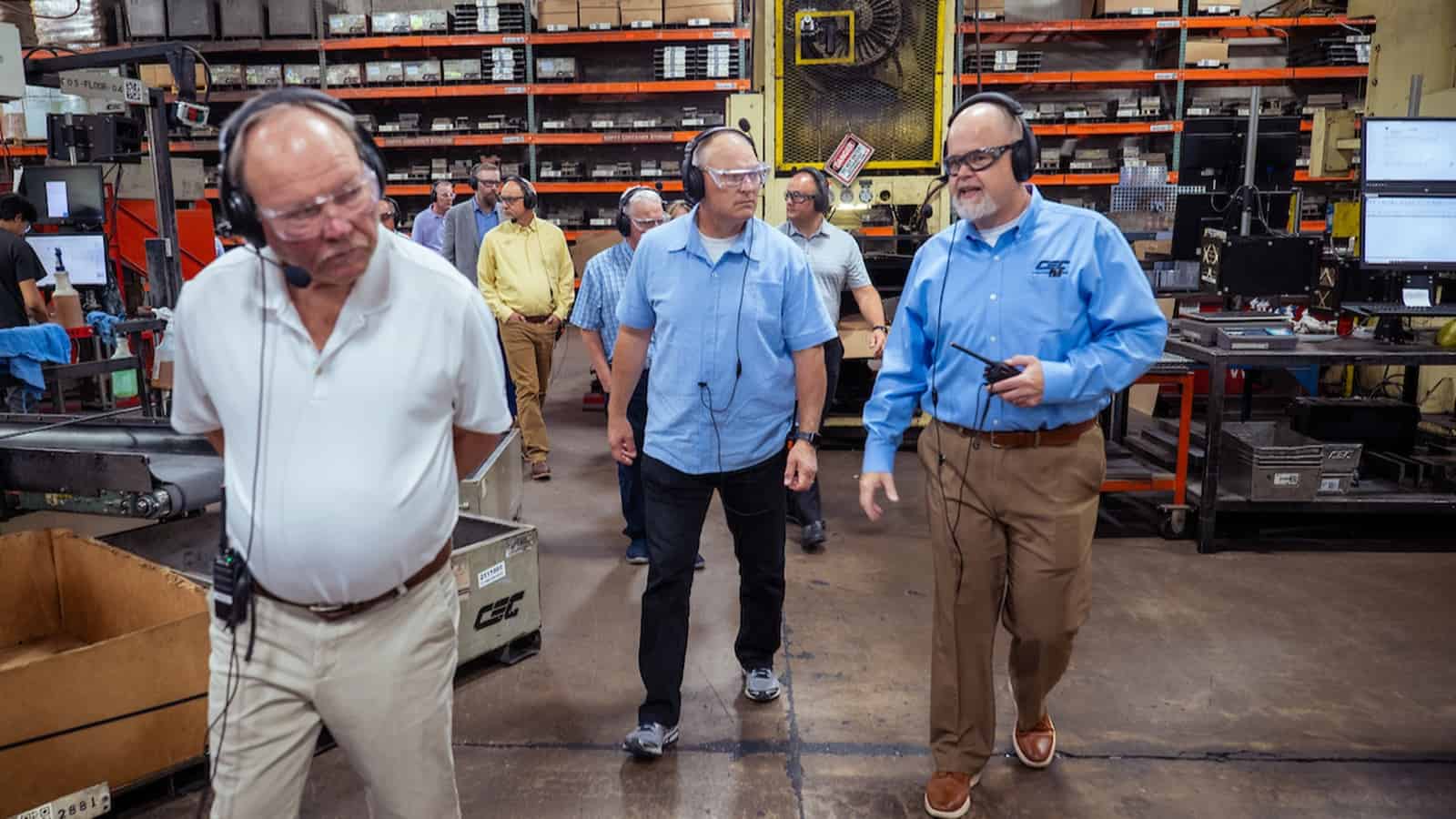
Permanent restoration of R&D expensing is a top priority for manufacturers in Minnesota and the U.S. in general. That’s why Rep. Pete Stauber (R-MN) plans to sign onto the American Innovation and R&D Competitiveness Act as a cosponsor, he recently told the NAM.
What’s going on: Rep. Stauber discussed the importance of competitive R&D tax policy, along with the regulatory onslaught targeting manufacturers and the need for permitting reform, during a recent NAM-organized facility tour of Clow Stamping Co. in Merrifield, Minnesota.
- “Full expensing for R&D costs in the year in which they are incurred is essential for innovation and competition,” Rep. Stauber told the group, which included Pequot Tool & Manufacturing CEO Karlo Goerges in addition to NAM representatives and Clow Stamping leadership. “It’s imperative that it be reinstated as soon as possible.”
- The American Innovation and R&D Competitiveness Act would restore immediate R&D expensing permanently for small businesses.
- “Full R&D expensing was instrumental in our growth until the law changed last year,” said Clow Stamping owner Reg Clow. “It’s definitely having an impact on us. Our expenses have gone way up.”
Workforce woes: Clow is nearing the end of a $20 million facility expansion that will add 107,000 square feet of floor space and at least 60 jobs—but finding enough workers to fill those jobs won’t be easy.
- By implementing automation in its shipping and receiving departments, the company will be able to both increase its shipping output without additional workers and channel its current hiring efforts toward filling open positions with the production departments, Clow said.
- This is a short-term solution, however, and manufacturers like Clow Stamping need policymakers’ help to ensure the industry has enough skilled workers for the decades to come.
- During the facility visit, the group discussed the importance of educating younger generations about the many opportunities available in manufacturing, via initiatives like Creators Wanted. This award-winning perception campaign undertaken by the NAM and its 501(c)3 workforce development and education affiliate, the Manufacturing Institute, aims to recruit 600,000 new manufacturing workers by 2025.
The last word: “Manufacturers account for more than 55% of all private-sector R&D spending in the United States,” said NAM Managing Vice President of Policy Chris Netram.
- “Policies that encourage this innovation will allow the industry to continue to drive our economy forward. The NAM thanks Rep. Stauber for his support of the American Innovation and R&D Competitiveness Act and calls on Congress to swiftly pass this bill.”
Creators Wanted and Union Pacific Dazzle the Twin Cities
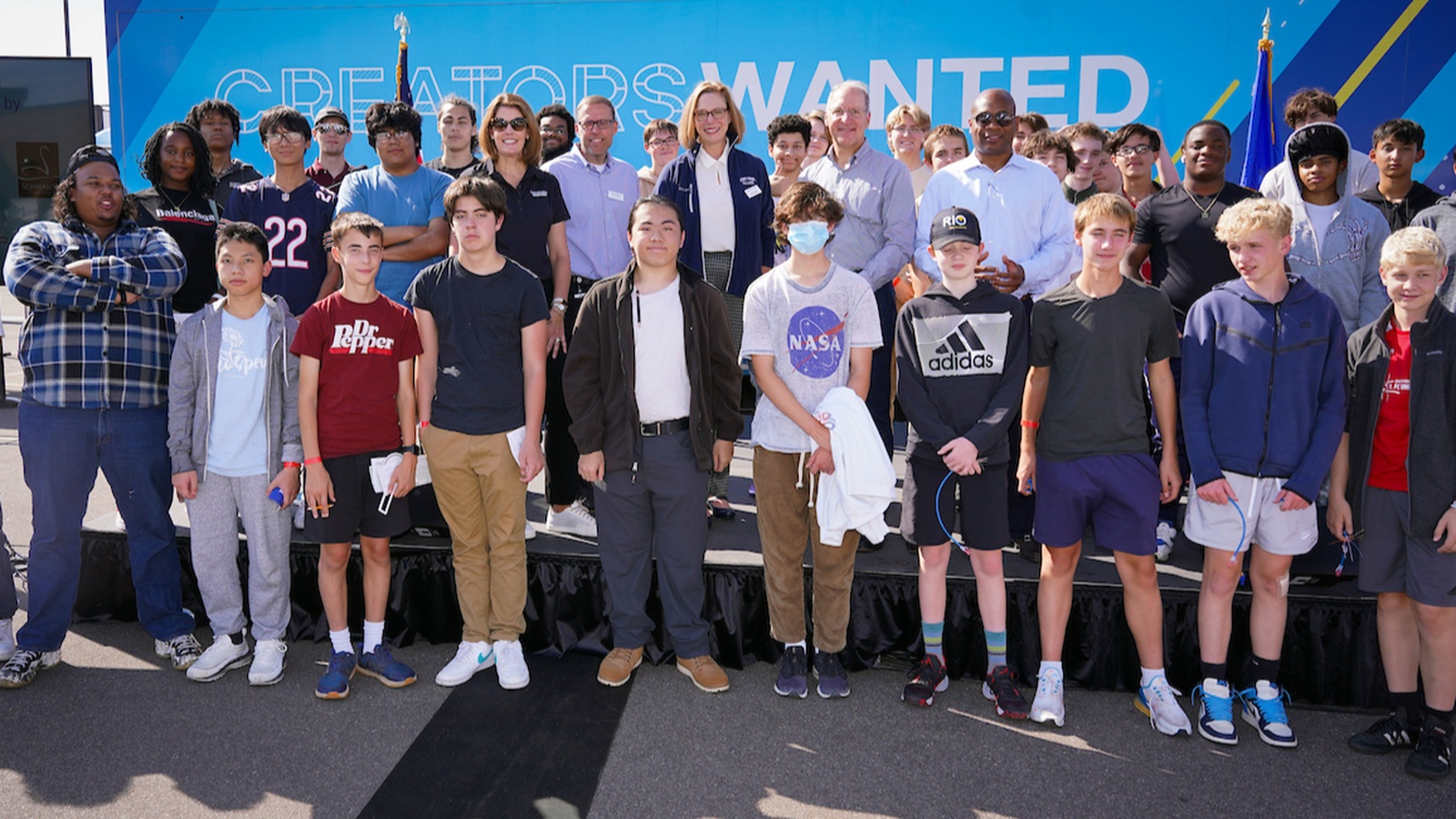
Last week, Saint Paul College in St. Paul, Minnesota, which boasts a student body that is 65% people of color, became the 19th stop of 20 for the Creators Wanted Tour, a joint project of the NAM and the Manufacturing Institute, the workforce development and education affiliate of the NAM.
Over three days, with Union Pacific as the lead sponsor, the stop drew more than 600 visitors, from students to educators. Meanwhile, 42,000 online signups in Minnesota helped the campaign surpass 1.5 million nationwide from students and career mentors interested in modern manufacturing careers.
Twin Cities kickoff: Union Pacific Executive Vice President of Marketing and Sales Kenny Rocker gave the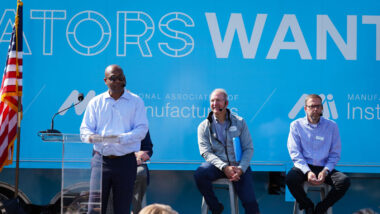 keynote address at the kickoff event, emphasizing the reward of manufacturing careers. He was joined by MI President and Executive Director Carolyn Lee, Saint Paul College President Dr. Dee Dee Peaslee, Minnesota Chamber of Commerce President and CEO Doug Loon and Trane Technologies Vice President of Product Management Dave Molin.
keynote address at the kickoff event, emphasizing the reward of manufacturing careers. He was joined by MI President and Executive Director Carolyn Lee, Saint Paul College President Dr. Dee Dee Peaslee, Minnesota Chamber of Commerce President and CEO Doug Loon and Trane Technologies Vice President of Product Management Dave Molin.
- “When I talk about opportunities, I’m talking about really good-paying jobs … At Union Pacific, we’re talking jobs that are … averaging over $100,000 a year, and that’s without benefits, and so you just really have an opportunity to make an impact from that perspective,” said Rocker.
- “At Trane Technologies, our vision is to boldly challenge what’s possible for a sustainable world,” added Molin. “It is the engine of our company, and we live it every day. And to do that, we need bright minds and the best minds in the world. We need diverse thinkers, we need creators, and our doors are open to everyone.”
- Notably, leaders from key government business and workforce partner organizations attended the kickoff, including the Minnesota State Advanced Manufacturing Center of Excellence, Minnesota Black Chamber of Commerce, Minnesota Parent Union and St. Paul Area Chamber, representatives from the offices of U.S. Reps. Brad Finstad (R-MN-1), Angie Craig (D-MN-2), Dean Phillips (D-MN-3), Betty McCollum (D-MN-4) and Michelle Fischbach (R-MN-7), Mayor of South St. Paul Jimmy Francis and State Reps. Jon Koznick (R), Emma Greenman (D) and Samantha Sencer-Mura (D).
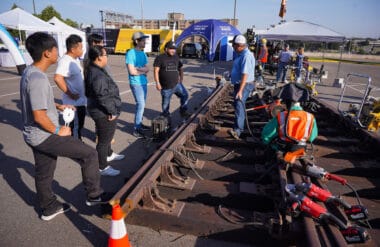
Experience and exploration: Students delved deep into immersive activities, from solving manufacturing-related puzzles in the Creators Wanted mobile experience to virtually navigating a locomotive through Union Pacific’s simulators. Equally captivating was the sight of the actual railroad track, which was complemented by insightful career anecdotes from Union Pacific professionals.
- Eighty-seven percent of students surveyed reported a significantly improved view of modern manufacturing careers after completing the immersive experience.
Live Q&A sessions: The stop also offered structured opportunities for students to learn about manufacturing organizations’ support for the next generation of talent, along with the importance of mentorship and personal development in shaping successful careers.
- The first session, featuring two Union Pacific senior managers—Amy Bang, Sr. manager of diversity and inclusion, and Ken Kuwamura, Jr., manager of talent acquisition—and Saint Paul College instructors, zeroed in on the crucial roles of mentorship, diversity and passion in career selection.
- The second session, with Jake Yernberg, automotive instructor, Saint Paul College; Caitlin Bundy, manager of corporate sustainability, Union Pacific; and Preeti Subramanian, senior product manager, Trane Technologies, accentuated the pivotal role of manufacturing in tackling global challenges. Panelists pointed out the advantages of the manufacturing sector, citing competitive pay and the sector’s potential in addressing global issues, such as sustainability and climate change.
Interactive Learning: Everfi®, Ecolab and Schwan’s joined Union Pacific in bringing in representatives to give students career advice—and offer activities to spark their curiosity.
- Everfi® showcased a new digital education program, “Future Creators,” co-developed with the MI and Union Pacific, to give middle and high school students a peek into STEM careers.
- Saint Paul College also took students on a tour of its robust Trades and Technical Education program.
Beyond the Tour: The Twin Cities event is a part of Union Pacific’s overarching “Careers on Track” initiative, which aims to inspire more women and youth to pursue modern industrial careers, and the Creators Wanted campaign’s sustained drive to enhance perceptions of manufacturing careers in the United States and empower more people to create the future.
The last word: “I want all of you out here, the students, to have an opportunity to go out there and win and compete and further your careers and do well in life,” said Rocker, echoing a theme the Creators Wanted Tour has promoted since its inception: manufacturers and manufacturing care about students and their future.
Next up: The pioneering Creators Wanted Tour concludes next month, Oct. 17–21, at the Circleville Pumpkin Show in Circleville, Ohio.
Husco Cracks the Employee-Retention Code
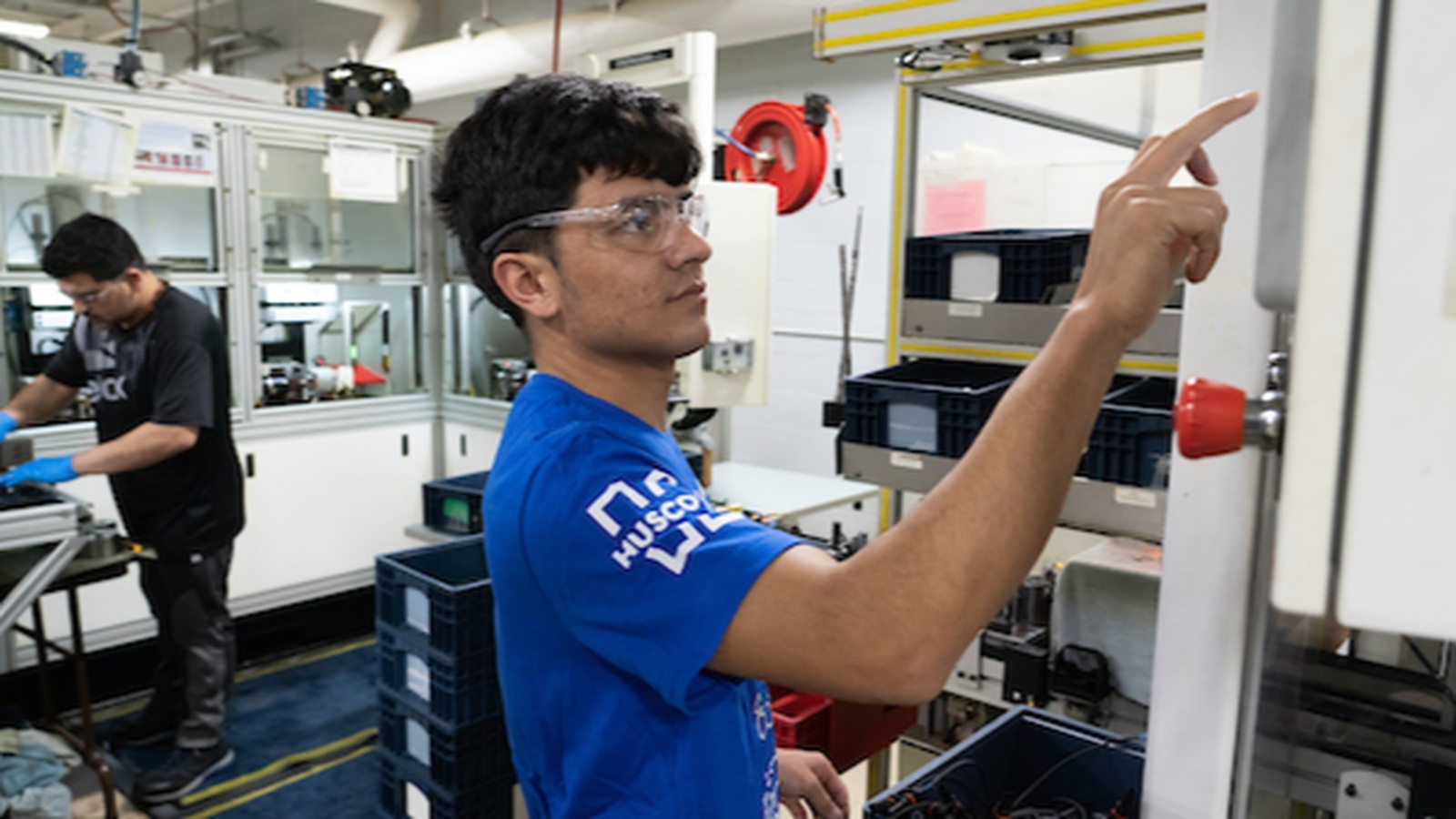
For Husco—a family-owned manufacturer of hydraulic and electro-mechanical control systems—building a strong, cohesive culture is the key to retaining talent.
The Waukesha, Wisconsin, company is among the many manufacturers that find retention to be a top business challenge, as the NAM’s quarterly Manufacturers’ Outlook Survey shows. So how do they create this cohesion?
It all starts at the top: Angela Stemo, vice president of global human capital at Husco, says the company has always prioritized trust and communication between employees and their managers.
- “Our retention has grown and strengthened because of the emphasis we place on our leaders having strong relationships with their employees—get to know who they are, find out what their interests are,” said Stemo.
- The company also lays the groundwork for strong bonds between coworkers, which often flourish outside of work as well. “Once they feel connected to people within the organization, they’re going to want to stay,” explained Stemo. “They’ve built friendships, they’ve built connections, and they feel really tied to the organizational culture.”
How they do it: Husco conducts employee engagement surveys once a year and holds occasional in-person focus group discussions to get feedback from employees.
- “As our organization becomes more diverse, we are offering surveys in more languages,” said Stemo. “We have a large Afghan population on our shop floor as well as many Burmese workers, so we’ve had our surveys translated into various languages for all employees to participate.”
- “For us, we really try to listen to what people say and what their suggestions are,” said Stemo. “If it’s something feasible and we can implement it, we try to figure out how to do so.”
Career development and advancement: Stemo noted that workers have consistently mentioned career development and advancement in the focus groups and surveys. The company has responded by expanding its offerings:
- Husco offers its workers 100% tuition reimbursement—whether for an associate’s, bachelor’s or master’s degree—and fully funded internal and external training.
- The company also offers a “scholars program” that helps recent high school graduates complete a bachelor’s degree in mechanical engineering while working at Husco. Scholars receive full-time pay and benefits along with 100% tuition support.
- “Husco emphasizes and truly supports lifelong, continuous learning,” said Stemo.
Internal programs: Within the company, Husco offers career development programs that feature rotations through different departments, such as quality, manufacturing and design. These rotations prepare workers for leadership positions, usually in engineering or manufacturing, said Stemo.
- Husco provides the opportunity for employees to pursue external certifications in Six Sigma (green, yellow or black) and project management, as well as attend classes in negotiation, presentation and communication through a third party or university/college. If an employee has the desire and completes the appropriate request forms, the company approves it, said Stemo.
Patent awards: Husco also provides a monetary reward for ideas that contribute to new products, processes or anything else that might be patented.
- “There is a staff engineer within each division who partners with various legal teams to apply for a patent award,” explained Stemo. “We recognize the award with a plaque and a patent award bonus.”
Other perks and support: Husco offers employees the flexibility of working one day a week from home and provides free health risk assessments, flu shots and on-site medical consulting. Through a corporate membership, the company also provides employees with day passes to visit the local zoo or museum for free.
Philanthropy: Philanthropy is central to Husco’s culture, and the company encourages its employees to get involved and help their communities. Husco supports employees’ philanthropic efforts through local outreach programs and volunteer opportunities.
- Husco donates 10% of its profits to charitable organizations, putting a special emphasis on those that support K-12 education. The company also donates to colleges and universities, while providing scholarships for exceptional local students and the children of Husco employees.
- “We match dollar to dollar employee donations to hundreds of different organizations,” noted Stemo. “Our philanthropic efforts are a big part of our culture and what makes employees ‘sticky.’”
The last word: Stemo shared some advice for companies struggling with workforce retention: there’s no substitute for good leaders.
- “People leave bosses,” she said. “It may not be the final reason why someone leaves a company, but a lot of times, that’s the beginning of why someone starts looking for a job elsewhere or takes that recruiter call.”
Go deeper: The Manufacturing Institute—the NAM’s 501(c)3 workforce development and education affiliate—has many resources to help employers retain and develop their teams.
- Start with this study on boosting retention and employee engagement, and register for an upcoming webinar on company culture.
- Interested in labor data and key workforce insights? Sign up for the MI’s new monthly publication, Workforce in Focus.
- For more on the latest trends and best practices in workforce development, sign up for the MI’s Workforce Summit on Oct. 16–18 in Atlanta. Click here for more information and to register.
Husco Cracks the Employee-Retention Code

For Husco—a family-owned manufacturer of hydraulic and electro-mechanical control systems—building a strong, cohesive culture is the key to retaining talent.
The Waukesha, Wisconsin, company is among the many manufacturers that find retention to be a top business challenge, as the NAM’s quarterly Manufacturers’ Outlook Survey shows. So how do they create this cohesion?
It all starts at the top: Angela Stemo, vice president of global human capital at Husco, says the company has always prioritized trust and communication between employees and their managers.
- “Our retention has grown and strengthened because of the emphasis we place on our leaders having strong relationships with their employees—get to know who they are, find out what their interests are,” said Stemo.
- The company also lays the groundwork for strong bonds between coworkers, which often flourish outside of work as well. “Once they feel connected to people within the organization, they’re going to want to stay,” explained Stemo. “They’ve built friendships, they’ve built connections, and they feel really tied to the organizational culture.”
How they do it: Husco conducts employee engagement surveys once a year and holds occasional in-person focus group discussions to get feedback from employees.
- “As our organization becomes more diverse, we are offering surveys in more languages,” said Stemo. “We have a large Afghan population on our shop floor as well as many Burmese workers, so we’ve had our surveys translated into various languages for all employees to participate.”
- “For us, we really try to listen to what people say and what their suggestions are,” said Stemo. “If it’s something feasible and we can implement it, we try to figure out how to do so.”
Read the full story here.
UAW Sets New Strike Deadline

The United Autoworkers union set a new strike deadline late last night, according to The Street.
What’s going on: In a video post on X, “UAW president Shawn Fain said [the union] would unveil more strike targets, with more union members participating, by noon eastern time Friday failing significant progress in talks with Ford, General Motors and Chrysler-owned Stellantis.”
- After negotiations for a new four-year labor contract failed late last Thursday, the UAW—which represents almost 150,000 U.S. autoworkers—ordered a walkout from vehicle plants belonging to the “Big Three” carmakers in Michigan, Missouri and Ohio.
- About 12,700 workers are now picketing assembly lines throughout the Midwest.
- Each of the vehicle manufacturers has put forth offers in recent days, and each has been rejected by the union, the demands of which include a sizable wage raise and a 32-hour workweek at 40-hour-a week pay.
Why it’s important: A 10-day strike of 143,000 UAW members against the three vehicle manufacturers could mean an economic loss of $5.617 billion, according to a recent report by Michigan-based consultancy Anderson Economic Group.
- A protracted strike this year would put “the state of Michigan and parts of the Midwest … into a recession,” Anderson Group CEO Patrick Anderson told the news outlet.
Our take: “ The economic harm produced by a strike goes well beyond GM, Ford and Stellantis,” said NAM Vice President of Domestic Policy Brandon Farris.
- “Numerous small and medium-size manufactures are already feeling the effects. The NAM encourages a swift resolution. Let’s get everyone back to work building products that our country relies on.”
Workers Stage Walkout at Detroit’s “Big Three”

The United Auto Workers union went on strike for the first time at all the Detroit “Big Three” carmakers early this morning, according to The Wall Street Journal (subscription).
What’s going on: “UAW officials initiated the walkout after failing to clinch new labor deals with General Motors, Ford Motor and Jeep-maker Stellantis for about 146,000 U.S. factory workers. Bargaining went late into the night, but the two sides remained too far apart to avoid a walkout at the 11:59 p.m. ET deadline.”
- Workers at a Ford Bronco plant in Detroit, a GM pickup-truck factory in Missouri and a Stellantis Jeep plant in Ohio were told to leave their posts.
- The three targeted facilities make some of the firms’ most popular vehicles.
Why it’s important: Automotive manufacturing in the U.S. is among the most productive industries in the world, underpinning the American economy as a whole.
- In fact, a strike of 143,000 UAW members against GM, Ford and Stellantis could lead to an economic loss of $5.617 billion after just 10 full days, according to a recent report by Anderson Economic Group.
- In 2019, a 42-day strike at one of the three vehicle manufacturers put the state of Michigan into a quarter-long recession and resulted in an economic loss of $4.2 billion, according to The Detroit News.
Our response: “The impact of this strike will echo far beyond the city of Detroit, as multiple economic analyses have demonstrated,” NAM President and CEO Jay Timmons said this morning. “The small and medium-sized manufacturers across the country that make up the automotive sector’s integrated supply chain will feel the brunt of this work stoppage, whether they are a union shop or not.”
- “American families are already feeling economic pressures from near-record-high inflation, and this will only inflict more pain. We urge a swift resolution to end this strike and avoid further undermining the strength of our industry and harming our broader economy.”
NAM in the news: Bloomberg (subscription), POLITICO, Reuters (subscription) and Bloomberg Law (subscription) all covered the NAM’s response to the walkout.
How Manufacturers Can Tap into a Large, Talented Workforce
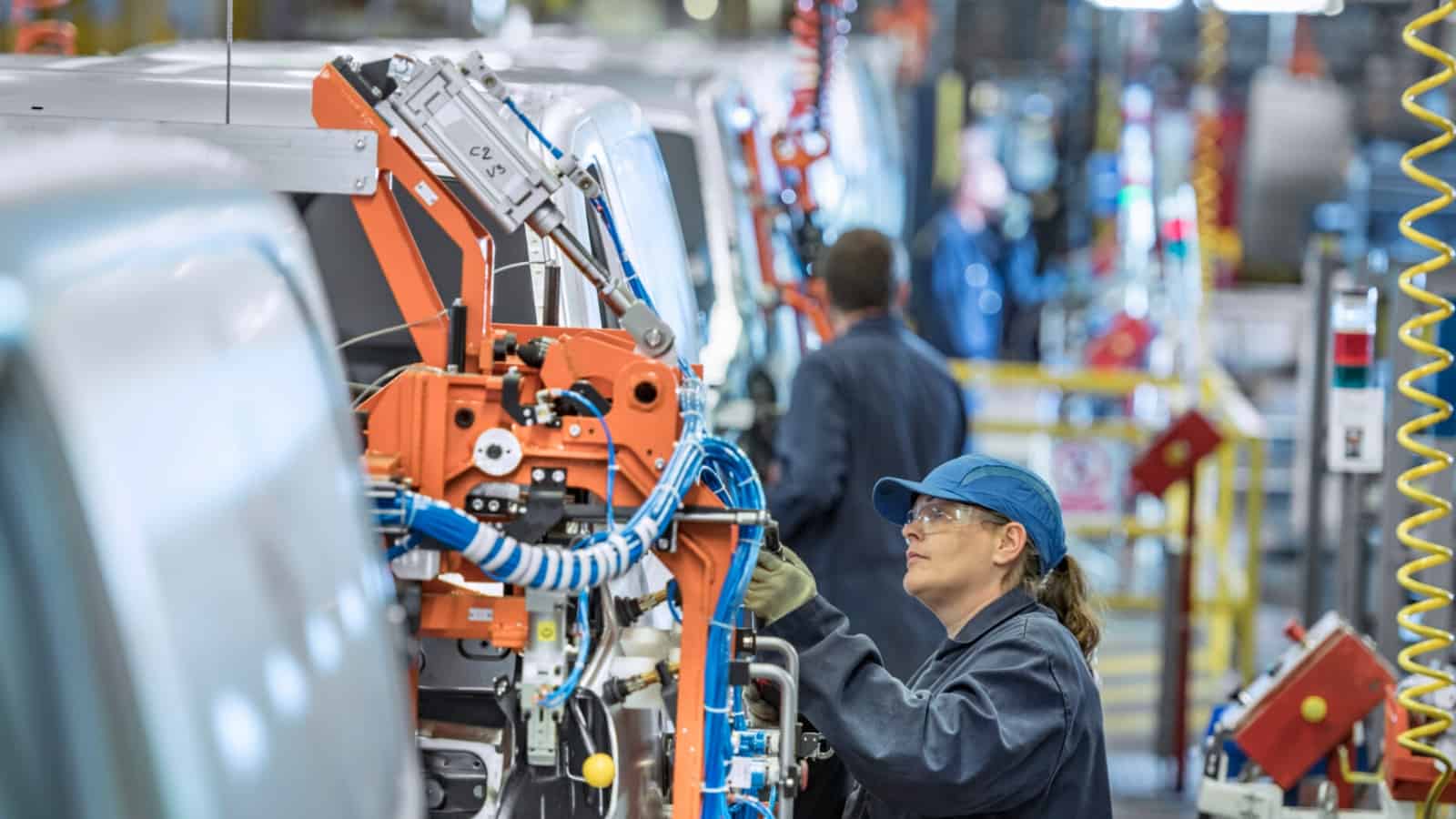
Discipline, reliability, a team-player mindset, leadership—manufacturers are looking for all these qualities in the talent they recruit. What if companies could tap into a population not only equipped with these skills but experienced in using them in high-stakes situations?
Well, the Manufacturing Institute—the workforce development and education affiliate of the NAM—has good news, if you haven’t heard it already: this population exists, and it’s military talent. Transitioning service members, veterans, National Guard members, reservists and military spouses have a wealth of skills and experience that translate easily into a manufacturing context.
So how can manufacturers reach these workers and make the best use of them? The MI recently convened both military and manufacturing leaders in Fayetteville, North Carolina, for its third Workforce Solution Series event, where they answered this question and offered a range of useful advice. Here are some of the highlights.
Generally speaking: Major General Eugene J. LeBoeuf, Deputy Commanding General, U.S. Army Reserve Command, highlighted the talents and skillsets that Army reservists can offer the manufacturing industry, including agility, a can-do attitude and a thorough grounding in engineering, logistics and mechatronics.
- With nearly 190,000 soldiers, the Army Reserve comprises much of the readiness force of the U.S. Army. Many of these reservists are underemployed or unemployed, which means they represent an opportunity for manufacturers.
- Manufacturers interested in hiring from this labor pool can partner with the Private Public Partnership Office, which connects companies with reservists at no cost.
Reaching military talent: Several panelists emphasized the importance of developing recruitment processes that encourage military talent to apply and interview for manufacturing jobs.
- “Make sure that the requirements you’re listing in your position descriptions are actually required. Do you really need someone to have a master’s degree to get the job done?” asked Rob Patton, vice president of Fayetteville Cumberland Economic Development Corporation.
- As a recently transitioned service member, James Goppert, HR business partner at WestRock, explained some of the challenges that military talent may face when entering the workforce. “Having to explain military skills and certifications to a civilian in an interview was strange. It would have been helpful to have someone on the other side who understood my experiences.”
Open to all possibilities: Jennifer Goodman, senior manager of talent initiatives at Coca-Cola Consolidated, drew on her experiences as a military spouse. “Military spouses are 92% women and have a 22% unemployment rate. That’s a huge labor pool that’s going underemployed or unemployed.”
- While relocation is often a concern for companies, Goodman points out that it does not have to be a disadvantage. “Think of manufacturers who have locations across the country. Maybe you can start a military spouse at one location and then move them to another. Or, if they’ve proven themselves after a few years, you could transition them to remote work.”
- “The benefits don’t stop with the one military spouse you hire,” she added. “We’re a very loyal community with great word of mouth and a larger referral network.”
The last word: “Don’t underestimate the value of an event like this Solution Series can have. You can take the information, energy and passion that you get from meeting with people who have the same goal of building a stronger economy and use it to power you forward,” said Nathan Huret, economic development director for Catawba County.
Learn more: To get started—or continue—with hiring military talent, check out the extensive resources of the MI’s Heroes MAKE America initiative, which prepares prospective military workers for new and rewarding careers in manufacturing.
Construction Struggles to Find Workers

A persistent shortage of construction workers in the U.S. is slowing the completion of everything from single-family homes to major infrastructure projects, according to CNBC.
What’s going on: To meet labor demands this year, “construction firms will need to attract an estimated 546,000 additional workers on top of the normal pace of hiring,” CNBC reports, citing data from Associated Builders and Contractors.
- “The construction industry averaged more than 390,000 job openings per month in 2022, the highest level on record, while unemployment in the sector of 4.6% was the second lowest on record.”
Why it’s important: The industry’s labor shortage is not likely to be resolved any time soon. When combined with rising materials costs, it will only worsen the backlog of projects, which is already at a four-year high.
What’s needed: The bipartisan infrastructure bill of 2021 allocated money for projects, but not for “enticing new workers … or training” them, according to CNBC. Another component of the solution: immigration reform, a policy the NAM has long advocated.
- “More money is going to need to be spent on training additional workers, bringing people into this industry,” a source told CNBC.
- Said another, “We should also be looking at ways to allow more people to lawfully enter the country and work in construction careers, whether that’s a temporary work visa program that’s specific to construction, or broader comprehensive immigration reform.”
Our take: “The record manufacturing construction activity seen in the U.S. is further straining an already tight labor market,” said Chad Moutray, chief economist at the NAM and director of the Center for Manufacturing Research at the Manufacturing Institute, the NAM’s 501(c)3 workforce development and education affiliate.
- “Leaders in the sector are trying to think of ways to differentiate themselves in the competition for talent. Such pressures—along with changing demographics—are likely to keep workforce challenges front and center over the coming years.”